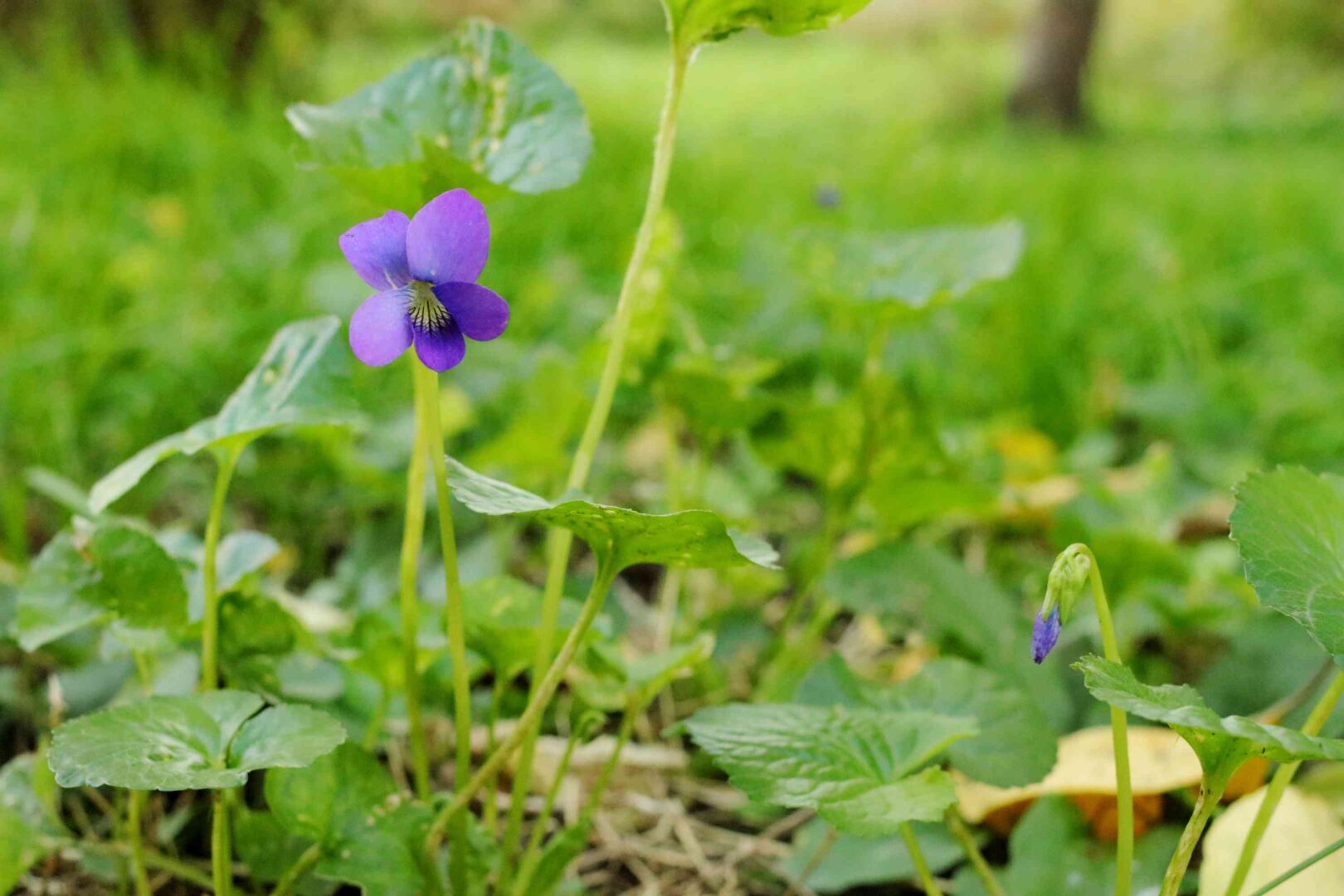Understanding and Controlling Wild Violet in Lawns

Wild violet (Viola sororia) is a widespread perennial broadleaf weed that can be particularly challenging to control in lawns. It is often found in shaded residential areas with established trees and thinner turf swards, and its presence in moist habitats suggests it may prefer irrigated sites. While some know it as a popular garden flower and it is the state flower of several states, it is considered a persistent weed, especially in high-quality turf areas. Turf managers frequently refer to wild violet and similar species as wild violets. Wild violet can spread both by seeds and asexually through ramet-forming rhizomes, which makes manual removal difficult unless the rhizomes are also removed.
Controlling wild violet is difficult for several reasons:
- Cultural practices like regular mowing or reducing shade can reduce weed density, but their effect on complete control is limited.
- Increasing nitrogen fertilization does not help reduce violets.
- Common three-way herbicide mixtures (e.g., 2,4-D + MCPP + dicamba) do not control wild violet well.
Past research on the efficacy of other synthetic auxin herbicides has shown inconsistent results.
We conducted research at Purdue aimed at evaluating various synthetic auxin herbicides and their mixtures for wild violet control and to determine the optimal rate of triclopyr for control.
Key Research Findings
The experiments compared several synthetic auxin herbicides and mixtures and also tested a range of triclopyr rates.
Herbicide Comparison:
- Among the tested synthetic auxin herbicides, triclopyr was the most effective for controlling wild violet.
- Other common synthetic auxins like 2,4-D, 2,4-DP (dichlorprop), MCPP (mecoprop-p), and MCPA, either alone or in simple mixtures, showed little to no effectiveness; their results were comparable to the nontreated control.
- Quinclorac alone also provided poor control.
- Mixtures containing triclopyr (such as 2,4-D ester + triclopyr ester; triclopyr ester + quinclorac; and 2,4-D ester + 2,4-DP ester + triclopyr ester) were effective in reducing plant mass and regrowth.
Interestingly, adding quinclorac or phenoxy herbicides like 2,4-D did not significantly improve wild violet control beyond what triclopyr achieved on its own in most tested mixtures. The exception was the three-way mix (2,4-D ester + 2,4-DP ester + triclopyr ester), which resulted in the highest level of epinasty (stem twisting and leaf curling) observed at 99% 21 days after application. While not boosting wild violet control, mixtures can be useful for controlling a broader range of weed species and potentially delaying herbicide resistance.
Triclopyr Dose-Response:
This part of the study specifically looked at how different rates of triclopyr affected wild violet control. As the amount of triclopyr applied increased, visual symptoms (epinasty) became more severe, while plant health indicators like chlorophyll content and plant mass decreased. Regrowth measured after harvesting the treated plants provided the best indication of long-term control. Based on the regrowth data, the triclopyr dose needed to achieve different levels of control was determined:
- “Good” control (≥ 75% reduction in regrowth) required a triclopyr dose of ≥ 0.72 lbs ae/acre. This is equivalent to about 23 fl oz/acre rate of Turflon Ester Ultra.
- “Excellent” control (≥ 90% reduction in regrowth) required a triclopyr dose of ≥ 0.90 lbs ae/acre. This is equivalent to about 28 fl oz/acre rate of Turflon Ester Ultra.
Implications for Lawn Care Professionals
Wild violet is a tough weed that often escapes control from standard herbicide applications. This research confirms that triclopyr is the most effective synthetic auxin herbicide for its control.
A critical finding for your practice is that the amount of triclopyr applied directly impacts the level of control achieved. Many turf herbicide products containing triclopyr apply less than the required rate for effective wild violet control when used at their maximum label rates.
Therefore, to achieve good (≥ 75%) wild violet control, turf managers should:
- Select herbicide products that contain triclopyr.
- Ensure the application dose of triclopyr is at least ≥ 0.72 lbs ae/acre when used according to the label.
To maximize control, use the high label rate of triclopyr containing herbicides or tank mix triclopyr at its maximum allowable rate (e.g., 1 pint/acre when tank mixing with another broadleaf herbicide).
If the maximum label rate of a product containing triclopyr is below 0.72 lbs ae/acre, multiple applications may be necessary to reach acceptable control levels.
In summary, effectively controlling wild violet requires using a product containing triclopyr and applying it at a sufficient rate.
Dr. Aaron Patton
Purdue University

